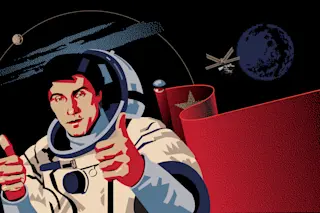Two cosmonauts stepped off a bus at the Baikonur Cosmodrome — the Soviet Cape Canaveral — ready to ride a 10-story Soyuz rocket into orbit. This launch complex in the heart of Kazakhstan had sent the first satellite, animal and human (Sputnik, Laika and Yuri Gagarin) into space. It was the spring of 1991, three decades after Gagarin’s historic flight, and Sergei Krikalev and Anatoly Artsebarsky were there to follow in his footsteps. But first, they kept up the tradition Gagarin had started back in 1961. The men marched to the right rear tire of the bus, unzipped their spacesuits and started urinating. Then, they headed for the launch pad.
To the world, space travel had become routine. American astronauts had flown dozens of space shuttle missions, and Soviet cosmonauts were building ever more complex space stations, culminating with Mir, Artsebarsky and Krikalev’s destination. Few eyes glanced skyward that day, ...














